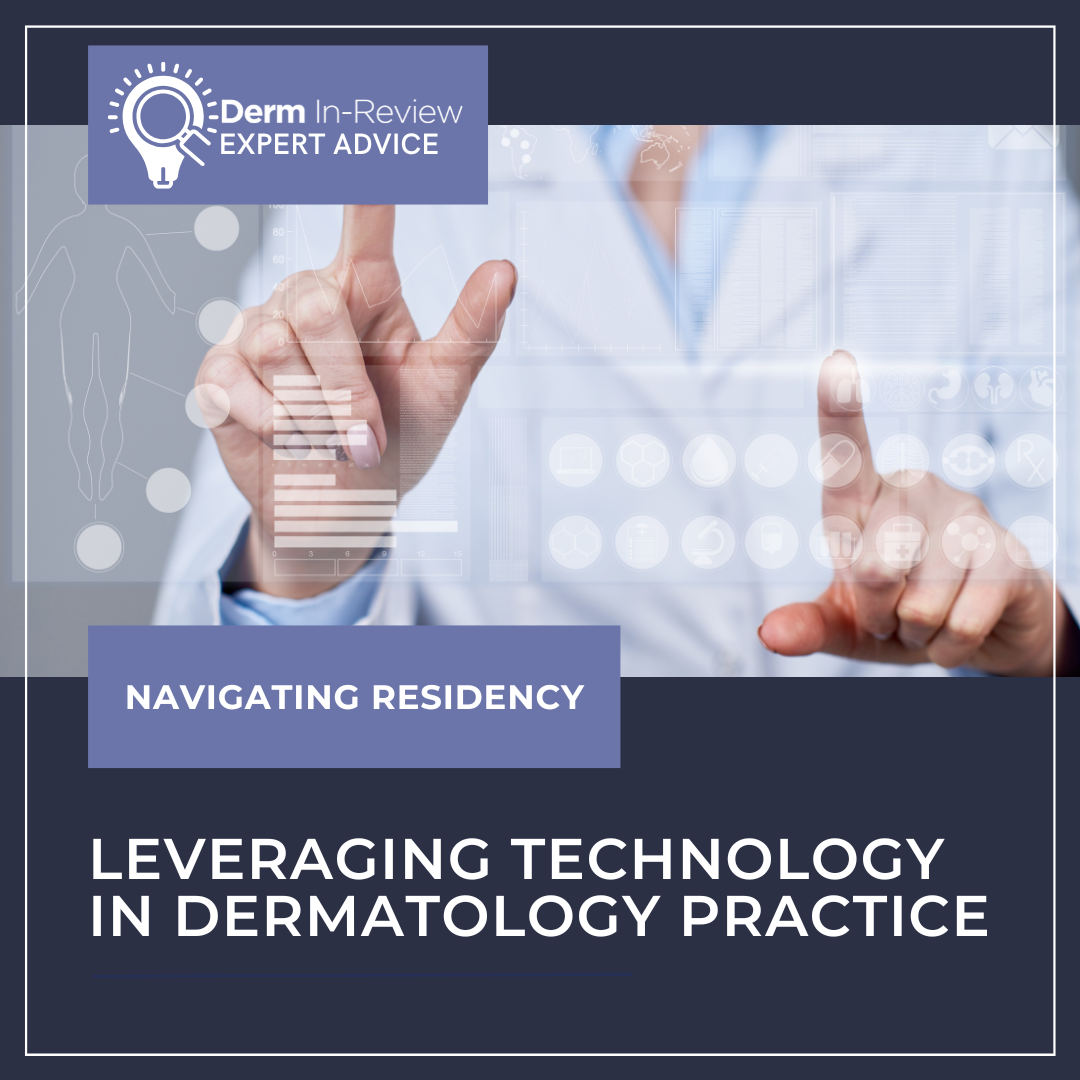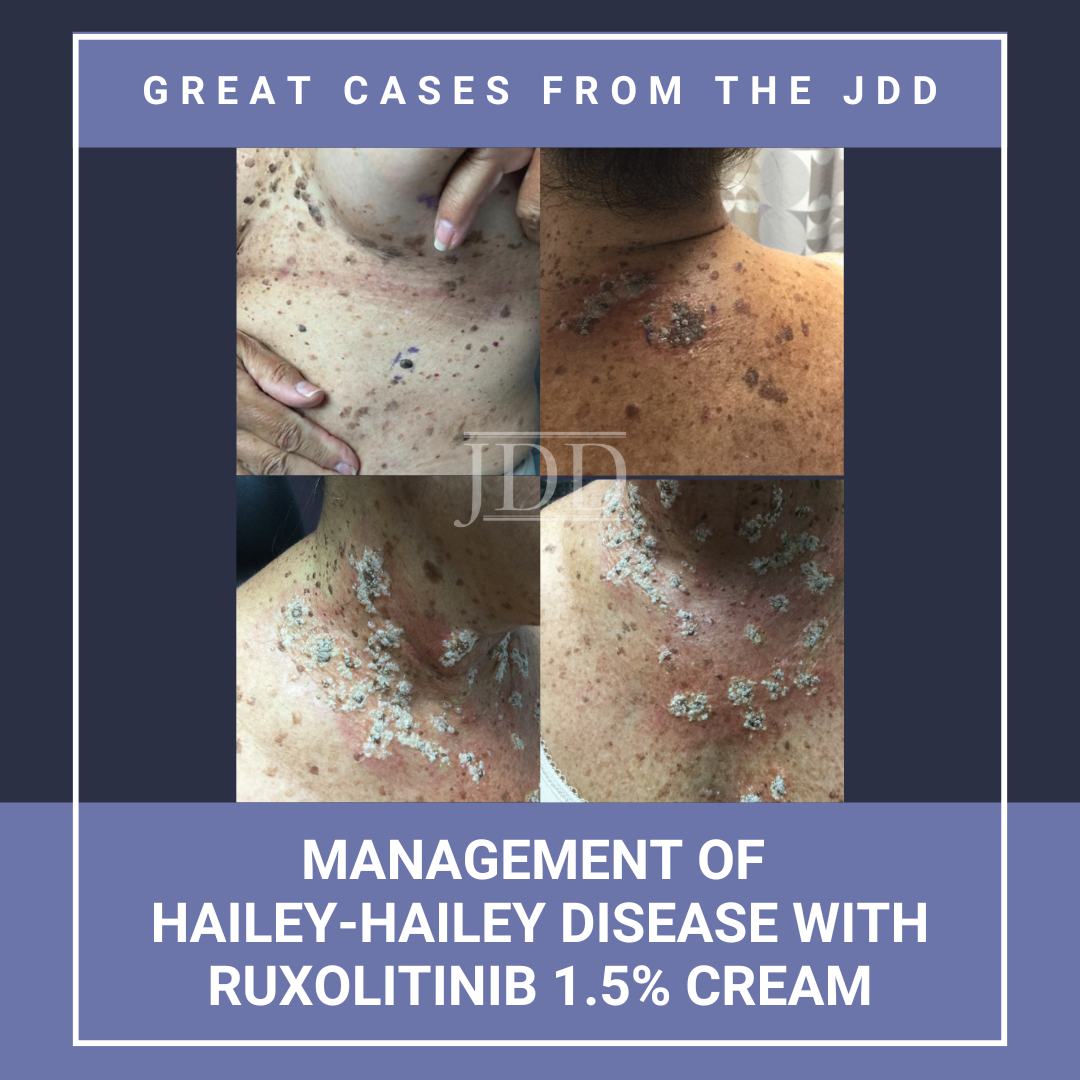Leveraging Technology in Dermatology Practice
 Technology is continuously reshaping the practice of dermatology, affecting documentation workflows, and patient engagement and outreach. For dermatology residents, developing a strategic approach to digital tools during training can translate into a growing practice that provides efficient and high-quality patient care.
Optimizing the Electronic Medical Record
Documentation remains one of the m …
Technology is continuously reshaping the practice of dermatology, affecting documentation workflows, and patient engagement and outreach. For dermatology residents, developing a strategic approach to digital tools during training can translate into a growing practice that provides efficient and high-quality patient care.
Optimizing the Electronic Medical Record
Documentation remains one of the m …
 Technology is continuously reshaping the practice of dermatology, affecting documentation workflows, and patient engagement and outreach. For dermatology residents, developing a strategic approach to digital tools during training can translate into a growing practice that provides efficient and high-quality patient care.
Optimizing the Electronic Medical Record
Documentation remains one of the m …
Technology is continuously reshaping the practice of dermatology, affecting documentation workflows, and patient engagement and outreach. For dermatology residents, developing a strategic approach to digital tools during training can translate into a growing practice that provides efficient and high-quality patient care.
Optimizing the Electronic Medical Record
Documentation remains one of the m … Continue reading "Leveraging Technology in Dermatology Practice"


 After treating this patient with Onabotulinumtoxin-A, they return to clinic complaining of their right upper eyelid drooping and interfering with their vision. What is the mechanism of action of the medicated eye drops which has been shown to be beneficial when this adverse effect occurs?
A. Alpha agonist which results in contraction of the superior tarsal muscle
B. Alpha agonist which resul …
After treating this patient with Onabotulinumtoxin-A, they return to clinic complaining of their right upper eyelid drooping and interfering with their vision. What is the mechanism of action of the medicated eye drops which has been shown to be beneficial when this adverse effect occurs?
A. Alpha agonist which results in contraction of the superior tarsal muscle
B. Alpha agonist which resul …  Introduction
Benign Familial Pemphigus (Hailey-Hailey Disease [HHD]) is caused by a mutation within ATP2C1, the gene encoding the calcium pump of golgi apparatuses, impacting keratinocytes' ability to adhere to each other, resulting in acantholysis.1 Clinical presentation of HHD encompasses blisters that become erythematous plaques and fissures within flexural areas on a relapsing basis …
Introduction
Benign Familial Pemphigus (Hailey-Hailey Disease [HHD]) is caused by a mutation within ATP2C1, the gene encoding the calcium pump of golgi apparatuses, impacting keratinocytes' ability to adhere to each other, resulting in acantholysis.1 Clinical presentation of HHD encompasses blisters that become erythematous plaques and fissures within flexural areas on a relapsing basis …  Dr. Robyn Siperstein, a dermatologist in Boca Raton and Boynton Beach, Fla., says don’t limit energy-based devices to cosmetic dermatology. Next Steps in Derm, in partnership with the ODAC Dermatology Conference, interviewed Dr. Siperstein. Watch as she shares three medical conditions where she’s found success using devices originally developed for cosmetic use. Learn why microneedling with ra …
Dr. Robyn Siperstein, a dermatologist in Boca Raton and Boynton Beach, Fla., says don’t limit energy-based devices to cosmetic dermatology. Next Steps in Derm, in partnership with the ODAC Dermatology Conference, interviewed Dr. Siperstein. Watch as she shares three medical conditions where she’s found success using devices originally developed for cosmetic use. Learn why microneedling with ra …  Patients with hidradenitis suppurativa (HS) are commonly told to eat healthy to improve their disease severity. However, with so many dietary options in this day and age, what does an HS-friendly diet even look like? An article in the November Journal of Drugs in Dermatology shares research analyzing several diets and their impact on HS disease severity, as well as the impact of vitamin and minera …
Patients with hidradenitis suppurativa (HS) are commonly told to eat healthy to improve their disease severity. However, with so many dietary options in this day and age, what does an HS-friendly diet even look like? An article in the November Journal of Drugs in Dermatology shares research analyzing several diets and their impact on HS disease severity, as well as the impact of vitamin and minera …